A recent trip to the Hawkes Bay gave me an opportunity to photograph Kōtuku ngutupapa/Royal Spoonbills at the Napier wetlands. A windy day with grey skies was perfect for Birds on White photography and white birds on white pushed the challenge up a notch.
I have written about this previously in relation to the photo of a leucistic Piwakawaka/Fantail as the final image in the post Another Feast of Fantails. The important thing is setting a manual exposure value as automated exposure modes will underexpose the scene rendering greys rather than the required white.
This brief visit highlighted the benefit of some local knowledge as I have never photographed in this location before. A quick web search revealed a link to a useful Hawkes Bay location guide on the BirdsNZ website. This was a useful starting point but as we arrived I noticed a photographer with a Nikon 200-500mm lens about to leave in her car so asked for some advice. She told me where she had been photographing Spoonbills but that they had left. Suspecting that having left they may return we headed to the described location. Before long one circled, buffeted by the wind, did 2 laps and then landed. This was all the opportunity needed for a series of flight images of a white bird on white.
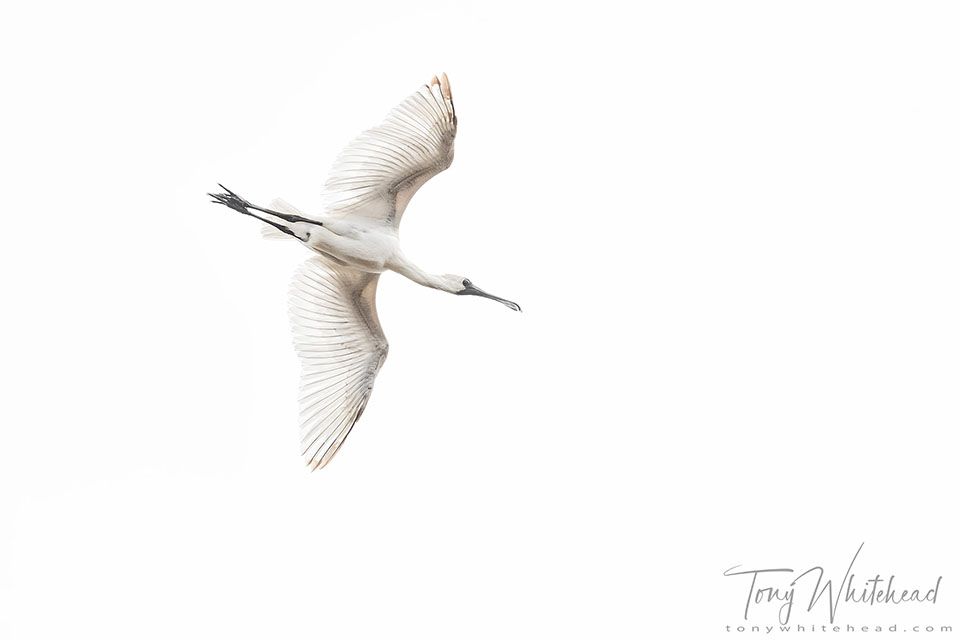
This final photo works only because the Spoonbill had turned its head to look down at me. Without the eye contact if would just be an unflattering view of the underside despite the interesting texture of the wings. It is similar in this regard to Edin’s photo of a Cattle Egret in flight that won her the DPhoto Photographer of the Year competition in 2014. Her image features again in the latest 100th edition of DPhoto along with some of her more recent work in an article looking back at past winners.
Photos with Nikon D850 and Nikon 500mm f5.6PF lens.
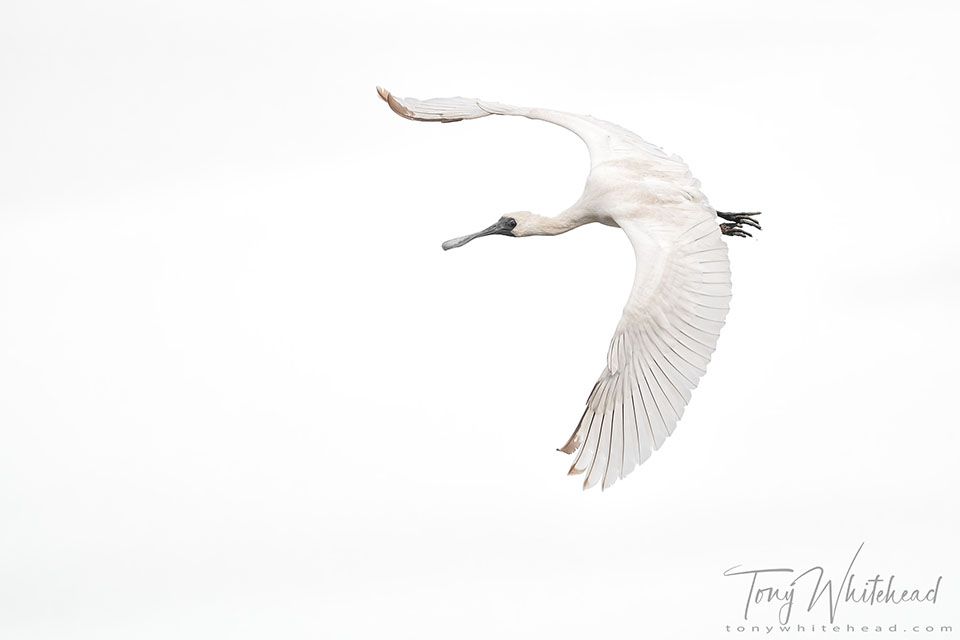
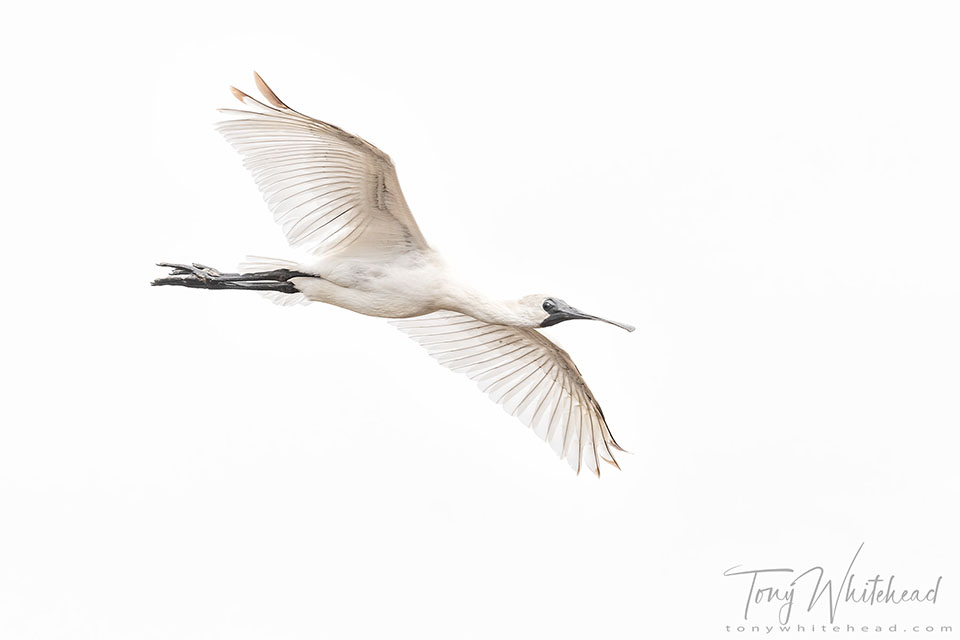
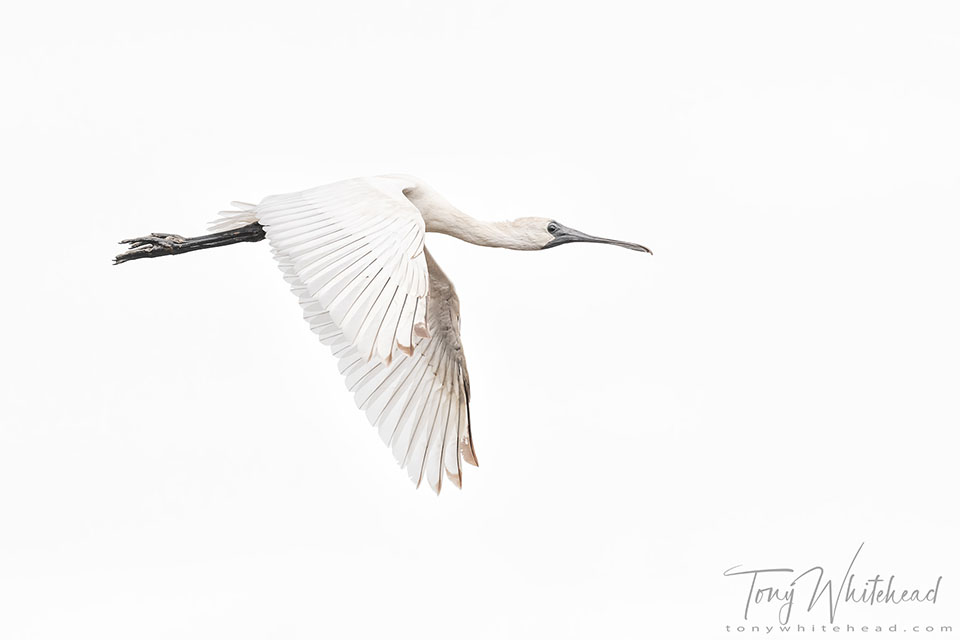
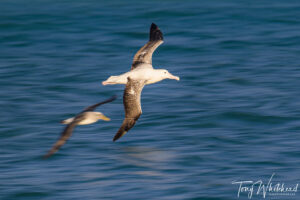
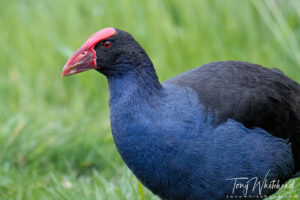
Chris Kurton
24 May 2021Great. His is what I’m trying to achieve. Any chance of telling me what camera settings were used. Focus mode, VR on or off, shutter speed etc.
tony
24 May 2021Hi Chris,
Exposure depends on the amount of light at the time. Those images were 1/2000 f5.6 ISO 800. Metering off grey sky and +1.7-2 stops is a start, alternatively meter incident light and use that as a start, test shot and LCD review of histogram helps as does blinkies in preview – you want sky to flash back at you but not subject. Manual works better than auto for exposure.
Focus settings here – https://www.tonywhitehead.com/wildlight/archives/9384
I generally keep VR on as it stabilises the image in the viewfinder.
Gulls make good practice subjects. Have fun.
Chris Kurton
26 May 2021Great thanks for your help.